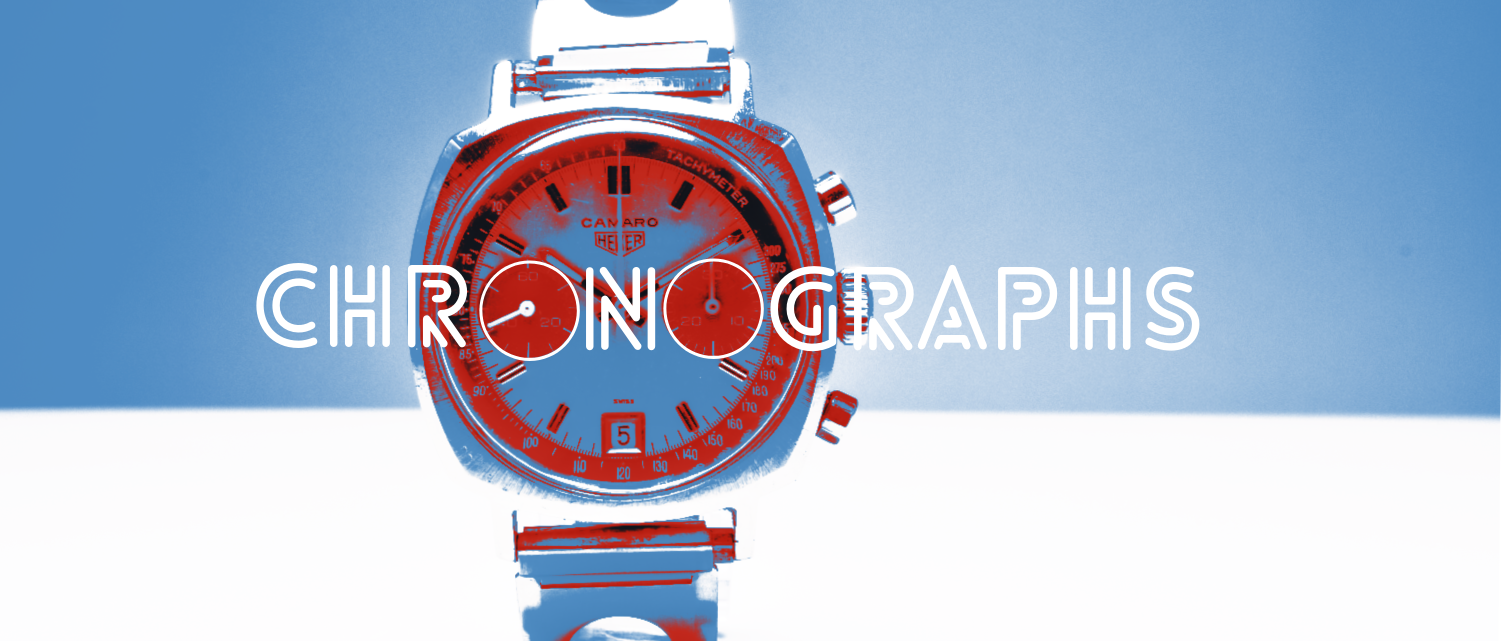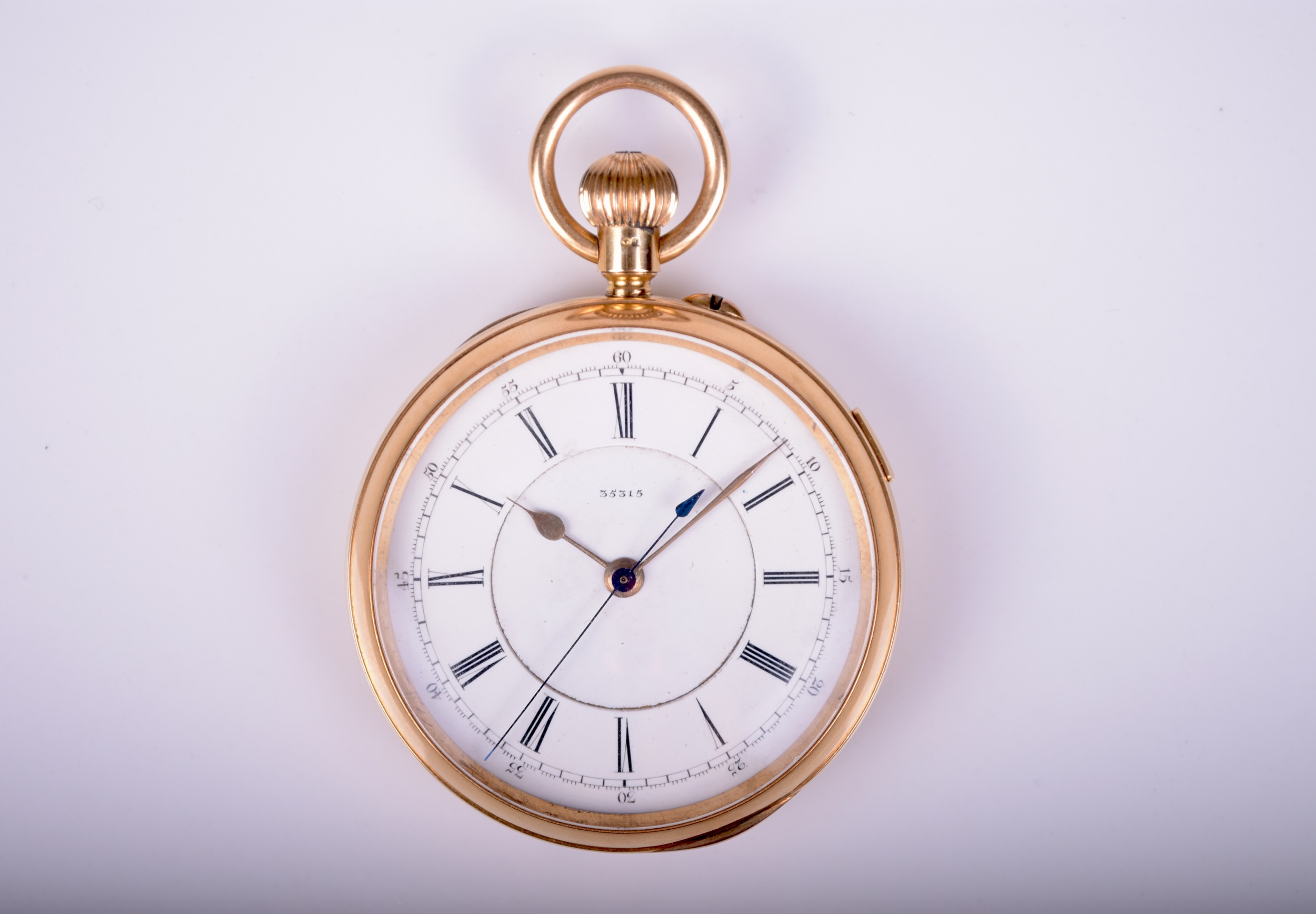

Watch specialist Alexander Clement takes a look at a popular sub-category of wrist and pocket watches, chronographs, and what makes them so desirable.
22/07/2024
In the world of wristwatches, there are plenty of niche areas to consider when forming a collection. You might consider military watches or dive watches or dress watches, for example, and have plenty available to you to put together as small or as large a collection as you want and to a range of budgets. One area that can often mean having deeper pockets, though, is chronographs. These are more specialised watches with complicated movements that are designed for a range of timing scenarios but which have often been associated with sports and motor racing, lending them an extra sheen of excitement and romance.
A chronograph watch is, essentially, one that is able to time an event or operation, having a separate hand that can be started and stopped at the push of a button. The first chronograph was patented in France in 1821 by the maker Nicolas Mathieu Rieussec and more quickly designs followed from Switzerland and Britain. Early chronograph pocket watches had a centre seconds hand that was actuated by a slide button on the case which served to start, stop and reset. The dial could be calibrated to record either seconds or more specific intervals. Some were used for medical purposes and so were calibrated to monitor pulses or heartbeats. For the purposes of calculating speed, a tachymeter scale would be applied, and for distance you would have a telemeter scale.
 An 18ct gold open face chronograph pocket watch by Robert Curtis of Hull, circa 1902
An 18ct gold open face chronograph pocket watch by Robert Curtis of Hull, circa 1902
During the early 20th century, chronograph wristwatches began to appear with pioneer makers such as Longines, Breitling and Universal Geneve, quickly adopted by armed forces for their accuracy and timing capabilities. More advanced chronograph watches have additional or ‘subsidiary’ dials to record elapsed time, making it possible to record for several hours. The combination of tachymeter scale and sub dials for elapsed time is a configuration that many chronograph wristwatches have adopted since the early 20th century, especially those associated with motor racing, and has continued to the present day. Among the most sought-after classic chronographs are those that follow this pattern including the Omega Speedmaster, Rolex Daytona Cosmograph, Tag Heuer Carrera and Jaeger-LeCoultre Polaris.
The Omega Speedmaster was introduced in 1957 as a sports and racing chronograph, tying in nicely with the firm’s position as official timekeeper for the Olympic Games. The watch underwent a few subtle modifications over the following five years to become the design still used today. The watch was one of a small number tested for use in space by NASA, passing all the rigorous tests with flying colours to become one of the official timepieces issued to astronauts. It is for this reason that the model became known as the Moon Watch in 1969 with the first lunar landing, being worn on the surface by Buzz Aldrin.
Edward (Ed) Higgins White (1930-1967) was a United States airman, test pilot and NASA astronaut. He was one of a select few pilots selected for the Gemini and Apollo missions and it was during the Gemini 4 flight of 1965 that he became the first American to walk in space. During this mission and his Extravehicular Activity (EVA), Ed White was wearing an Omega Speedmaster. The choice of this watch had been decided by NASA following a series of tests that had been carried out to find the best chronograph for use during space missions.
Shortly after Ed White’s historic EVA in 1965, Omega applied a new designation to the Speedmaster chronograph – Professional, owing to its NASA accreditation. Consequently, the pre-professional version made between 1963 and 1965, reference 105.003, became known as the Ed White and carries a much greater interest and value to collectors today.
The Chevrolet Camaro, introduced in 1966, was the car firm's answer to Ford's Mustang and one of a new breed of high-powered light bodied vehicles which became known as 'muscle' cars. The Camaro was also used as the Indianapolis 500 pace car and provided the perfect name for a new chronograph from Heuer. Jack W Heuer had a keen interest in the American market and having gained exposure to the US public by being the official timekeeper for motorsport events, he chose to leverage this further by naming his third model the Camaro after Chevrolet's vehicle, following on from the Autavia and Carrera. Produced from 1968 until 1972, the Camaro represents an unusual and comparatively rare model, available in a range of dial configurations including attractive dark grey subsidiary dials set against the brushed silver dial. The use of contrasting sub dials on a light coloured or white dial came to be known among collectors as 'panda', with the opposing white sub dials on a dark or black dial as 'reverse panda'.
In 1971, Tudor, a subsidiary of Rolex, introduced its new 7100 series chronographs which became known to collectors as the 'Monte Carlo' in light of the coloured dial resembling a roulette wheel. In updating their range of chronographs, Tudor replaced the Valjoux Calibre 7734 movement with the manual wind Calibre 234, which offered greater accuracy and a more sophisticated chronograph mechanism with a clutch column wheel. In addition, the dials were offered in two colourways, grey and blue, with matching bezels. Reference 7149/0 was fitted with a fixed bezel with coloured tachymeter insert, 7159/0 had a satin steel bezel with etched tachymeter scale, and 7169/0 offered a rotating bezel with 12 hour markers to record a second time zone. The watches were typically supplied with an Oyster link steel bracelet which evolved into the solid link type.
A Rolex Daytona Cosmograph owned by the film star Paul Newman was, for a time, the most expensive watch ever sold at auction when it realised a staggering US$17.7m in 2017 at Phillips in New York. This version of the watch had black subsidiary dials on an off-white main dial, one might say the ultimate ‘panda’, but now also referred to as ‘Paul Newman’. The watch had been a gift to Newman from his wife Joanne Woodward in 1968 and had remained in the family ever since. Chronographs are a fascinating area of collecting as well as being among the most attractive and desirable timepieces with exciting links to racing, the military and space exploration. Small wonder that they are often highly contested at auction but, nevertheless, can still be found at reasonable prices to suit a more modest budget.
.